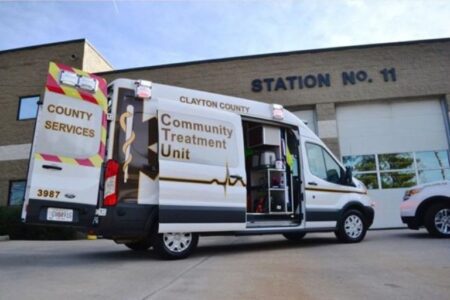In the field of Emergency Medical Services and fire response, first responders face numerous challenges daily. Among these are the incidents of violence or assault against EMS and fire personnel, which are often underreported and misunderstood. Several challenges obstruct the accurate reporting of these incidents and the ability to connect personnel with support, but with the right tools, solutions are within reach.
What Are the Top Challenges and How Can Flexible Reporting Software Provide Viable Solutions?
Challenge #1: Lack of Reporting Altogether
First responders frequently experience incidents of violence and assault but don’t report them due to unavailable or unofficial functionality, lack of time or a belief that dealing with violence is part of the job. This under-reporting issue makes it hard to understand the full extent of the problem and develop effective solutions. Without accurate reporting, many incidents go unnoticed and unaddressed.
Solution: Accessible Reporting
With flexible ePCR and fire RMS software, first responders can report incidents quickly and easily from the same system used to document patient care and fire records, encouraging more frequent reporting. This can lead to more accurate data, helping departments understand the extent of the problem and develop effective interventions. It can also help break down barriers to reporting, fostering a culture of transparency and accountability.
Challenge #2: Unestablished Policies and Protocols
Many departments lack comprehensive policies and procedures for reporting incidents of violence or assault. This lack of guidance can lead to confusion about how and when to report, resulting in inconsistent or missed reports. Personnel may feel unsupported or unsure about how to handle these situations.
Solution: Standardization and Configurable Functionality
Flexible reporting software can help departments standardize the process of tracking and reporting incidents, while customizing their protocols and procedures to fit their specific needs. This can ensure information being captured aligns with the unique challenges of each department, helping to identify trends, allocate resources effectively and monitor the impact of interventions. It can also encourage buy-in from staff, who can see that the system is designed to support their specific needs. This topic has been on the minds of those at NEMSIS as they explore implementing standardized datasets aimed at reporting violence against EMS personnel.
Challenge #3: Documentation Difficulties
Documenting incidents of violence or assault can be challenging, especially in high-stress situations where the primary focus is patient care and community safety. Details may be forgotten or overlooked, and finding the time to complete necessary documentation amidst the demands of the job can be difficult. This can lead to incomplete or inaccurate data.
Solution: Streamlined Documentation
Intuitive software can automatically timestamp and geotag incidents, simplifying the documentation process and ensuring accuracy. This can save valuable time for first responders, allowing them to focus more on their primary responsibilities. It can also improve the quality of data, making it more reliable and useful for analysis.
Challenge #4: Fear of Repercussions
First responders may fear potential repercussions if the violence or assault occurred while they were attempting to provide care. This fear can discourage reporting, allowing violent incidents to continue to go unnoticed. It can also create a culture of silence around the issue.
Solution: Confidentiality
The right reporting software can offer secure, confidential reporting options. This can help protect first responders from potential repercussions, encouraging more reporting. It also ensures the privacy and security of sensitive data, building trust among staff.
Challenge #5: Lack of Support
Without support from department management or supervisors, personnel may feel discouraged from reporting incidents of violence or assault. This lack of support can foster a culture of silence and acceptance around violence, further exacerbating the problem. It can also lead to decreased morale and job satisfaction among crews.
Solution: Real-Time Reporting
With real-time data entry and reporting, management can promptly address incidents and provide necessary support to personnel. This can lead to quicker resolution of issues, better support for affected personnel and more effective interventions. It can also demonstrate to staff that their reports are taken seriously and acted upon, encouraging further reporting.
Challenge #6: Cultural Norms
In some departments, a culture of acceptance of violence as part of the job can discourage reporting. This culture can normalize violence, making it harder for personnel to recognize when they should report an incident. It can also lead to increased stress and burnout among crews.
Solution: Promote Culture Change
By making the reporting process easier and more efficient, reporting software can help shift the culture towards one that takes violence and assault incidents seriously. This can help to break down norms of acceptance of violence, encouraging more reporting and leading to a safer, more supportive work environment. It can also improve morale and job satisfaction among crews.
Support a Safer and Healthier Work Environment
While the challenges faced by departments in tracking and reporting violence against their personnel are significant, flexible ePCR and fire RMS software provides a comprehensive solution. With the right technology, departments can foster a safer, more supportive environment for their personnel, ultimately leading to better patient care, a safer community and a healthier workplace.




